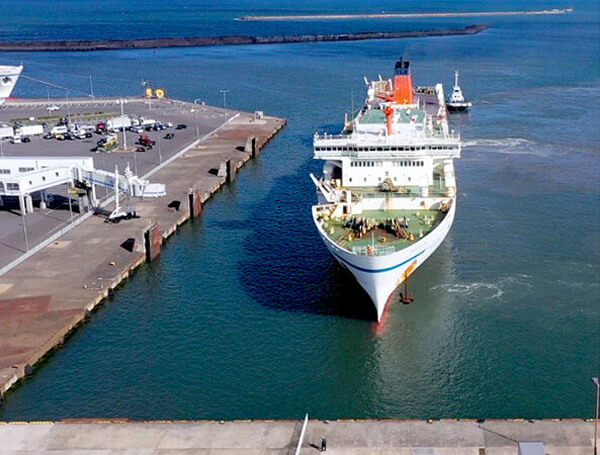Japan Claims Record for Longest and Furthest Autonomous Navigation

A Japanese ferry reportedly set a new record for the longest and furthest autonomous navigation as part of an ongoing series of demonstrations in a government-sponsored project to advance the technologies for unmanned ship operations. Japan’s Mitsui O.S.K. Lines as the leader of one of the consortiums working on the project announced the latest achievement this time working with coastal ferry following. Other tests proceeded with a Ro-Pax ferry and a container ship as part of the Nippon Foundation's MEGURI2040 project.
The latest demonstration project was conducted with the Sunflower Shiretoko, an 11,400 gross ton ferry. The test followed the normal commercial route of the ferry, which traveled a distance of approximately 466 miles over 18 hours. The 623-foot-long vessel has a normal capacity for 154 passengers as well as 62 cars and 160 heavy trucks. The ferry operates between the northern Japanese Tomakomai Port on Hokkaido Island and the Oarai Port in central Japan. The trial was conducted on February 6 and 7

Ferry during the maneuvering test at the dock (MOL)
The current test combined four critical systems. They tested the autonomous berthing and unberthing for the vessel as well as the collision avoidance routing system and a visual image processing system that identifies targets and calculates ranges.
MOL working with Imoto Lines provided the vessel for this test and was also responsible for the overall coordination and risk evaluation for the demonstration. Mitsui E&S Shipbuilding developed the technology for the automated collision avoidance routing, ship’s operation in port, and berthing-unberthing operation, while Furuno Electric was responsible for the systems that integrated information from sensors during navigation and at berthing to provide the “Cognitive" function in the automation system. A.L.I. Technologies developed the mooring support technology, which as in the prior test uses a drone to move the lines to the dock. MOL Marine & Engineering Co. created the simulation program for testing the collision avoidance navigation/ berthing/unberthing functions.
According to MOL, there remain issues such as improving sensing technology and making collision avoidance routes even closer to normal crew operations. The consortium aims to reduce the workload on seafarers and ensure safe, secure marine traffic by integrating the knowledge gained through MEGURI2040 initiatives to realize autonomous sailing activities with AI technologies such as computer vision.
The Nippon Foundation launched the MEGURI 2040 fully autonomous ship navigation project in February 2020 supporting five consortia, which will all be conducting demonstration tests to verify their fully autonomous navigation system concepts from January to March 2022. Among the goals the foundation aims to address will be to resolve issues in coastal shipping including improved safety, crew labor savings, and cost reductions.
The sea trial of the coastal car ferry followed the successful test of autonomous sailing with a coastal containership also conducted by MOL. The system used for the autonomous sailing in the tests of these two vessels is the same specification, and based on the success of these demonstrations, MOL believes that it was suggested that autonomous sailing might be possible on any ship by installing necessary equipment. Mitsubishi Shipbuilding also conducted a demonstration in January using a larger coastal ferry.
This was the second series of tests MOL conducted with this ferry. In March and April 2021, they demonstrated the auto berthing function and the ability to sail from a pier unmanned. The latest round of demonstrations builds on the earlier test with the goal of developing a highly versatile technology for commercial applications of autonomous vessels by 2025.
